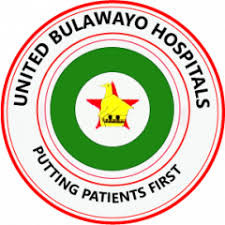
CRISIS (IPC Phase 3) outcomes are now widespread throughout the country, including in the few areas that had been maintaining Stressed (IPC Phase 2) outcomes during the post-harvest period following significantly below-average 2023/24 crop harvests.
As the lean season intensifies, access to food on the market is being increasingly constrained by above-normal prices and significantly below-normal incomes. Crisis (IPC Phase 3) outcomes are expected to last throughout the lean season until the next main harvest in early 2025.
On September 27, the Reserve Bank of Zimbabwe adjusted the official foreign currency exchange rate by nearly 43% from just under US$1:ZiG14, a relatively stable level maintained since the introduction of the new local currency in April 2024, to nearly US$1:ZiG24,4.
This development followed significant increases in parallel market exchange rates in the last few weeks, some even more than double the official rates, which drove corresponding sharp increases in ZiG prices of goods (including food) and services mainly in the formal sectors.
In addition, price increases in US dollars are also being recorded on the markets, partly a result of operational challenges reportedly faced by some manufacturers.
The price increases are increasingly constraining access to markets, especially for poorer households.
Water challenges are persisting, especially in the typical low rainfall areas, limiting and even preventing engagement in some livelihood activities, as well as negatively affecting some irrigation schemes.
Most rivers, streams and dams are dry and fast-receding water tables are causing deep well and borehole levels to drop, with some drying off completely as demand increases.
- Rampaging inflation hits Old Mutual . . . giant slips to $9 billion loss after tax
- Monetary measures spur exchange rate stability: RBZ
- Zim deploys IMF windfall to horticulture
- Banker demands $21m from land developer
Keep Reading
This has resulted in some households travelling longer distances and spending more time to access water for household and livestock purposes; in some cases, households are resorting to dry riverbed sand-scooping for water.
The water challenges, and deteriorating pasture conditions, are expected to continue driving poor livestock body conditions, some livestock poverty deaths, and below-normal livestock prices till after the start of the 2024-25 rainfall season.
Over 3 500 cattle deaths were reportedly recorded in Matabeleland South province the province most affected between June and September, with more than half of the cattle herd in the province reportedly at risk.
Rainfall forecasts indicate a normal start and at least average rainfall for the main 2024/25 agricultural season for all of Zimbabwe.
Irrigated tobacco planting started in early September; at the end of September, the Tobacco Industry and Marketing Board reported a 36% increase in the number of farmers registered to grow the crop this season, and a 45% increase in tobacco seed sales, compared to the same time last year.
Some farmers across the country have started preparing their lands in readiness for the rains, including digging planting holes under the government-promoted Pfumvudza/Intwasa (conservation agriculture) programme.
Harvesting of the 2024 winter wheat has also begun across parts of the country.
While typically a commercial crop, wheat was recently added to be part of the strategic grain reserves for Zimbabwe.









